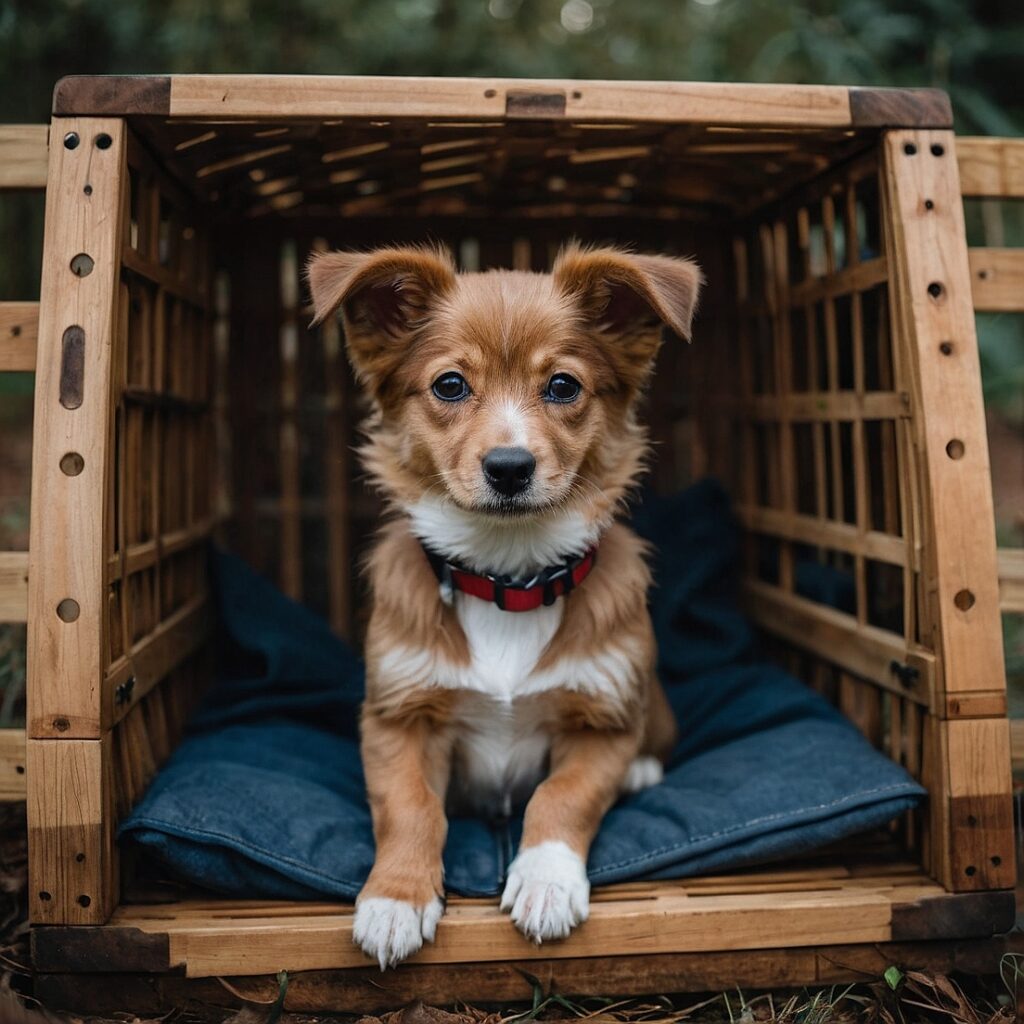Crate training is a popular and effective method for training dogs, offering a range of benefits that make it an essential part of pet care for many dog owners. Whether you’re a first-time dog parent or a seasoned pro, understanding how to properly crate train your dog can lead to a happier and well-behaved pet. In this article, we’ll explore the benefits of crate training, provide practical tips for success, and answer common questions to help make the process smooth and stress-free.
Why Crate Training?
Crate training uses a dog’s natural instinct to seek out a small, den-like space for comfort and security. The crate becomes your dog’s safe haven where they can relax, sleep, or retreat when they feel overwhelmed. Here are some of the key benefits of crate training:
1. Aids in House Training
Crate training is one of the most effective methods for house training. Since dogs typically avoid soiling their sleeping area, the crate encourages them to hold their bladder until it’s time for a potty break.
2. Prevents Destructive Behavior
Puppies, in particular, are notorious for chewing on shoes, furniture, and anything else they can find. A crate gives you peace of mind when you’re away from home by ensuring your dog stays out of trouble.
3. Provides a Safe Space
A crate can serve as a safe and quiet space for your dog to relax, especially during times of stress, such as thunderstorms, fireworks, or when unfamiliar guests are visiting.
4. Helps with Travel
Whether you’re traveling by car or plane, crate-trained dogs tend to be calmer and more comfortable during trips. It also keeps them safe in the vehicle and helps reduce anxiety in new environments.

Tips for Successful Crate Training
To ensure crate training is effective and positive for your dog, follow these essential tips:
1. Choose the Right Size Crate
The crate should be large enough for your dog to stand up, turn around, and lie down comfortably. However, it shouldn’t be too big, as this could encourage your dog to use one corner as a bathroom.
2. Make the Crate Inviting
Add a soft bed, blanket, and your dog’s favorite toy to make the crate a comfortable and inviting space. Never use the crate as punishment; it should always be a positive, safe space for your dog.
3. Start Slowly
Introduce the crate gradually. Begin by leaving the door open and allowing your dog to explore the crate at their own pace. Reward them with treats and praise when they enter on their own.
4. Establish a Routine
Consistency is key. Create a routine for crate time, such as having your dog spend time in the crate during naps, at night, or while you’re away. This routine will help them associate the crate with calm, restful times.
5. Avoid Leaving Your Dog in the Crate for Too Long
While crates are a great tool for training and safety, they shouldn’t be used excessively. Puppies under six months should only be crated for three to four hours at a time, while adult dogs can typically handle longer periods, but even they need regular breaks for exercise and bathroom time.
6. Use Positive Reinforcement
Reward your dog with treats, praise, or a favorite toy when they go into the crate. Over time, your dog will begin to associate the crate with positive experiences.
Common Crate Training Questions
Q: How long does it take to crate train a dog? A: The time it takes to crate train a dog varies depending on their age, temperament, and previous experiences. Some dogs may take to it in just a few days, while others may take a few weeks. Be patient and consistent for the best results.
Q: Is crate training cruel? A: When used properly, crate training is not cruel. In fact, many dogs grow to love their crates as it gives them a secure and cozy place to retreat to when they want to rest or relax.
Q: Can I use the crate for punishment? A: No, the crate should never be used as a form of punishment. The goal is to create a positive association with the crate, so your dog feels safe and comfortable there.
Final Thoughts
Crate training can offer numerous benefits for both you and your dog, from speeding up the house-training process to providing a safe space for your pet. By following these tips and using patience and positive reinforcement, your dog will soon learn to love their crate, leading to a happier and more well-behaved companion.



